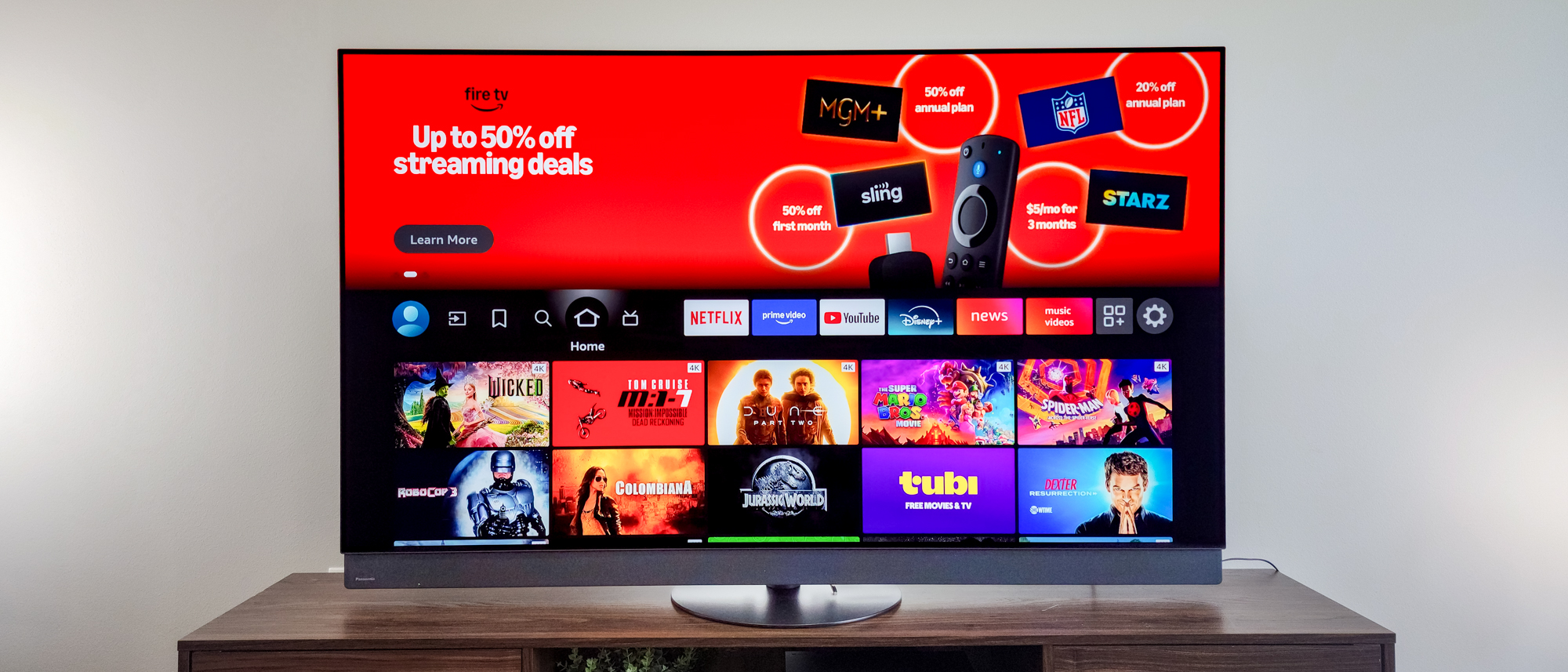Tom's Guide Verdict
The Panasonic Z95B produces a superb picture and ear-pleasing sound that mark it among one of the best OLED TVs on the market. Its lab test results reveal a vibrant and colorful picture along with great accuracy, although results can vary based on the picture mode. Only a few small issues with its settings and Fire TV smart interface hold it back from being perfect.
Pros
- +
Excellent color
- +
Good audio system with lots of configuration options
- +
Equipped with ATSC 3.0 tuner
- +
Beautiful design elements, including rotatable stand
- +
Supports all four major HDR standards
Cons
- -
Most accurate picture mode isn’t the brightest out of the box
- -
Antiquated Amazon Fire OS smart interface
- -
Only two HDMI 2.1 ports
Why you can trust Tom's Guide
Price: $3,399.99
Screen size: 65 inches
Model: 65Z95BP
Resolution: 3,840x2,160
HDR: Dolby Vision, HDR10, HDR10+, HLG
Refresh rate: 144Hz native
Ports: 2 HDMI 2.1, 2 HDMI 2.0, 3 USB
Audio: TBD
Smart TV software: Amazon Fire OS
Size (without stand): 57x35.9 x2.2 inches
Weight (without stand): 53 pounds
Panasonic isn’t always the first name that pops to mind when you think about high-end OLED TVs, but that might be changing. Last year’s Panasonic Z95A showed that the company still had it when it came to making dynamic TVs, and this year’s Z95B proves that last year was no fluke.
The Z95B stands up right alongside the current top performers from the likes of LG, Samsung, and Sony in terms of power, features, and price, and makes an excellent case for itself in every area. It’s packed with features designed to improve picture and sound performance, and it succeeds at doing so time and time again.
To the extent there are problems at all, Panasonic’s dim tuning of its most accurate picture modes might be a turn-off for some and require a bit of extra time and care to get the picture looking its best and brightest all the time. Also, the Amazon Fire OS interface is old-fashioned and clunky. These are inconveniences you may not appreciate if you’re shelling out nearly $3,400 for a TV.
But if you can put up with them, the Panasonic Z95B is both one of the best OLEDs and one of the best TVs you can buy period.
Panasonic Z95B OLED review: Pricing and availability
As Panasonic’s flagship OLED set in 2025, the Z95B stands at the top of the company’s TV offerings and replaces last year’s Z95A. Whereas that earlier model was available only in a 65-inch size, the Z95B can be purchased in any of three:
- Panasonic 55Z95BP (55-inch): $2,599 | $2,399 on sale
- Panasonic 65Z95BP (65-inch): $3,399.99 | $3,099 on sale
- Panasonic 77Z95BP (77-inch): $4,699 | No sale price yet
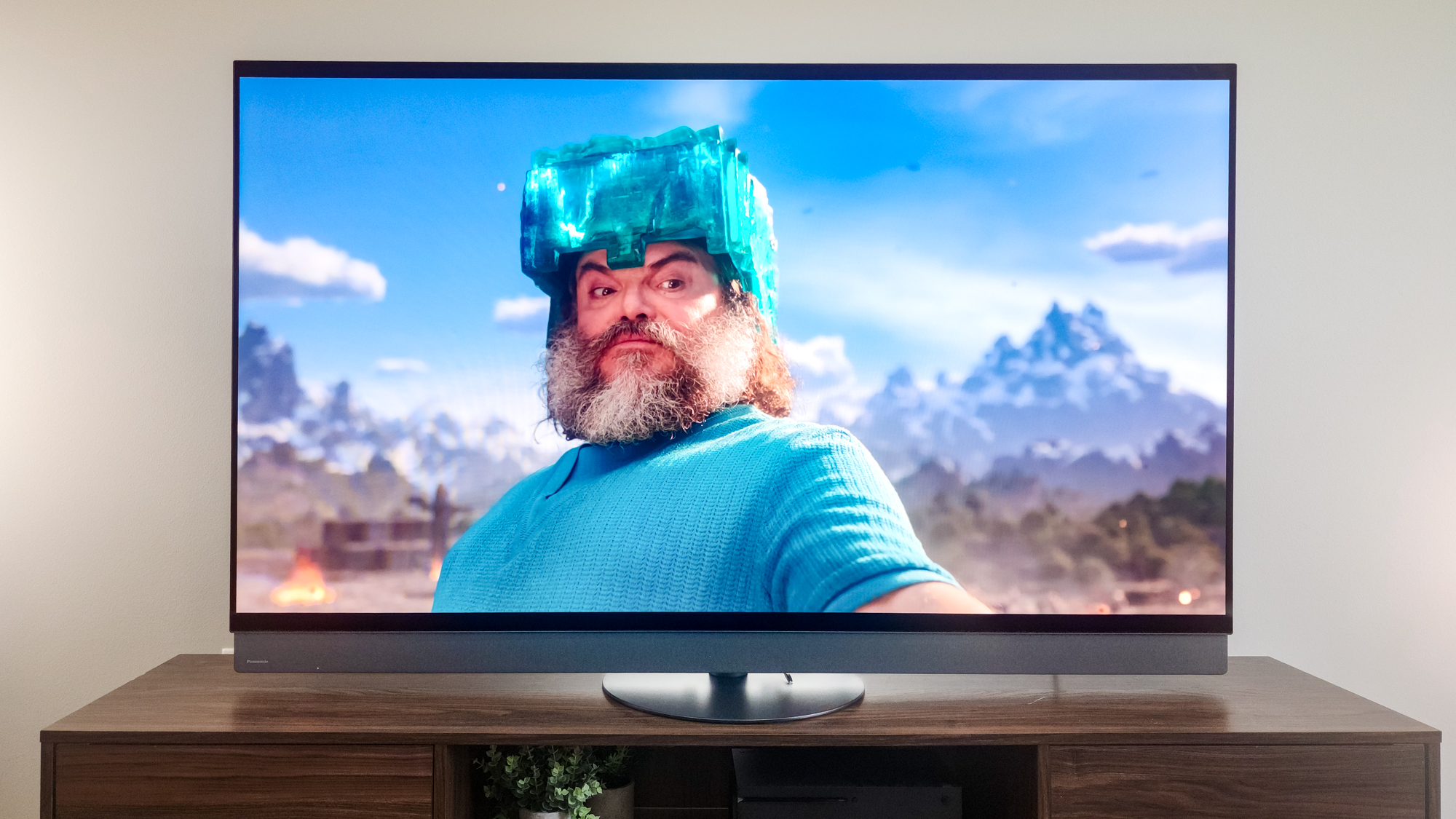
These are premium prices, yes, but right in step with the top-of-the-line sets from other manufacturers. The LG G5, for example, also has a list price of $3,399.99, and can be found on sale for $2,899.99.
Although we evaluated the 65-inch model of the Z95B, all sizes have similar components and use the same technologies, so we believe you can expect similar performance across the product line.
Get instant access to breaking news, the hottest reviews, great deals and helpful tips.
Panasonic Z95B OLED review: Design
Most high-end OLED TVs today pride themselves on their thinness. Panasonic, however, has taken its OLEDs in a different direction. This 57-by-35.9-inch TV is, like the LG G5, much thicker (about 2.2 inches, from the front of the svelte glass screen to the back of the rear panel), and the whole thing weighs 53 pounds. It looks nice and stylish, though, with dark-gray fabric covering the top and side edges and the 2.3-inch bottom bezel, on which the power light is visible in the lower-left corner.
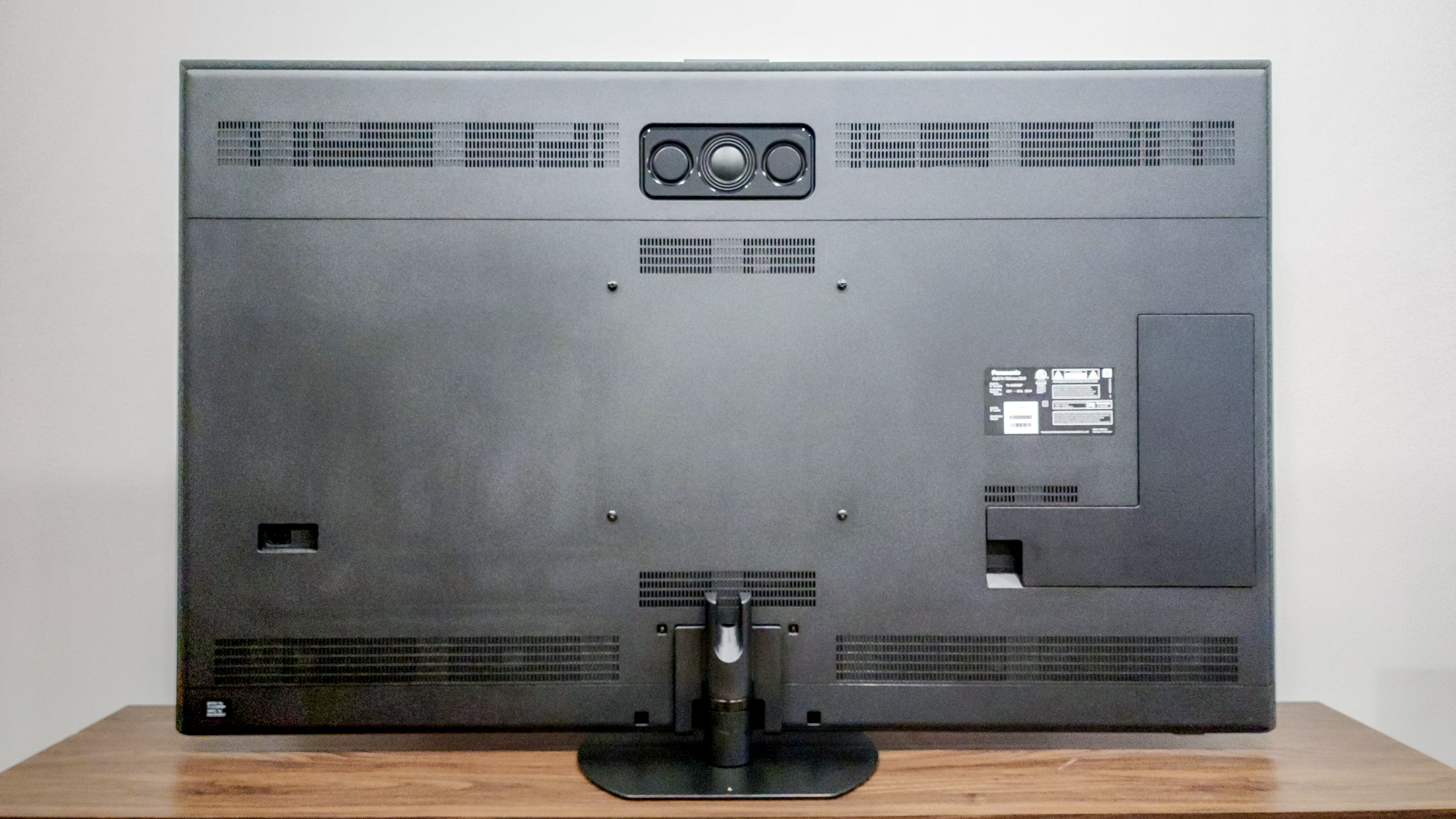
A hardware button in that same area lets you instantly access Power, Inputs, Volume, and Channel functionality with a single touch.
The rotating stand is a terrific feature, making it easy to reach the various ports.
You do, of course, have the choice of using the 300x300mm VESA holes on the rear panel to mount the TV on the wall. But if you prefer to go the entertainment center route, the stand included with the Z95B bears some additional mention. In addition to the large metal support foot (measuring just past 15 inches in diameter) and the cable channel built into its back, it allows the TV to rotate.
Just gently push the left or the right side of the screen to either reach the ports (see below) or adjust the screen to be viewable straight on from anywhere in the room. This is a terrific feature and something we haven’t seen on major TVs since… well, since the Z95A.
Panasonic Z95B OLED review: Ports
The power cable plugs into the Z95B’s rear panel on the right, and the rest of the ports are in a depression on the left that is easily hidden behind a snap-on plastic panel. Panasonic has positioned nearly all of the input ports (four HDMI, one with eARC, and two USB) to face out the left edge and all the more “permanent” ones (S/PDIF optical audio out, Ethernet, IR blaster, coaxial cable, headphone, and one USB port) to face downward on the back.
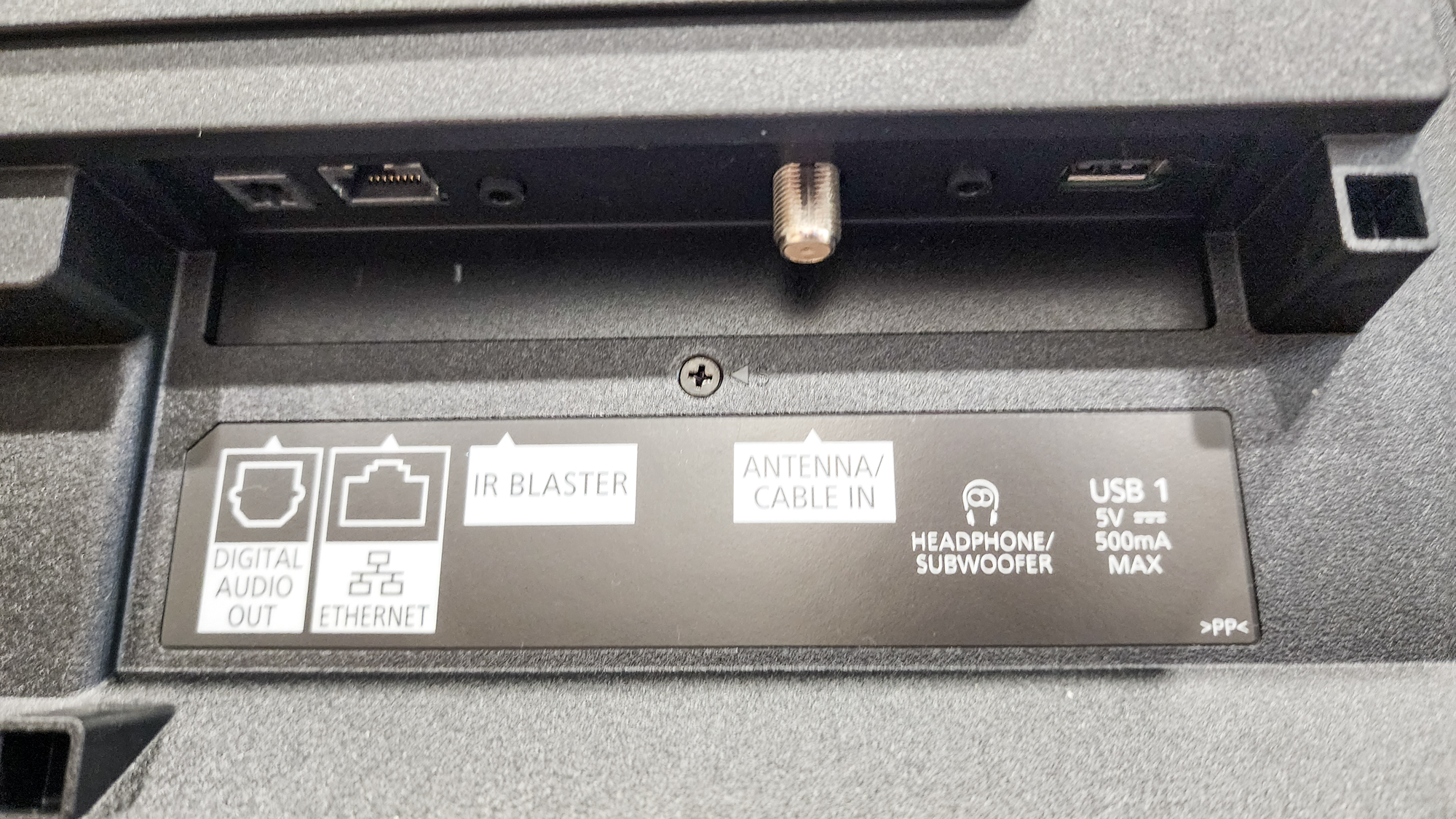
Of the HDMI ports, only two support the newer HDMI 2.1 standard that allows for refresh rates at up to 144Hz on connected devices as well as support for features like Auto Low-Latency Mode (ALLM); the others default to HDMI 2.0, which is limited to 60Hz.
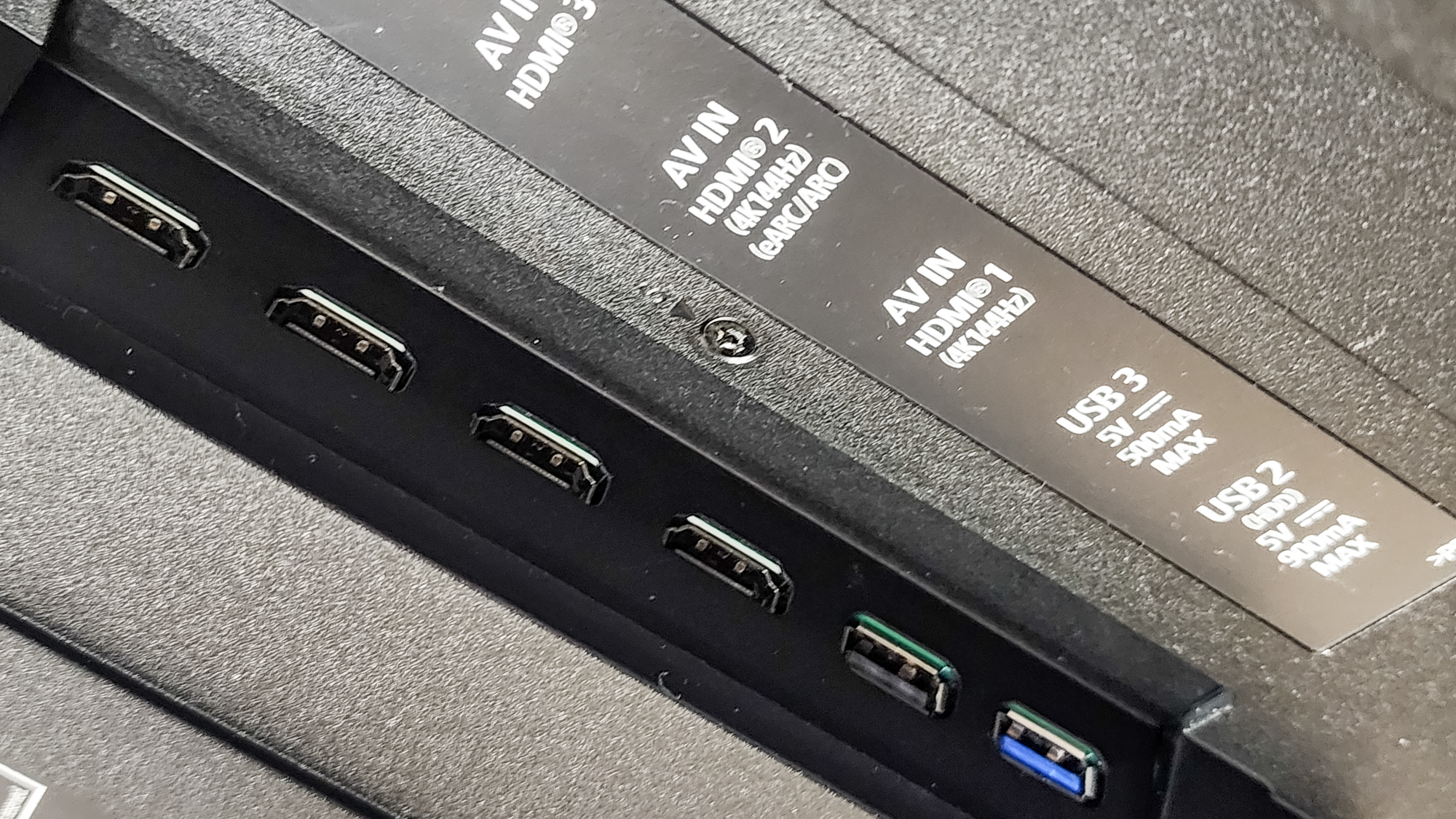
Although some companies (Sony being a major one) do restrict the number of HDMI 2.1 ports, many are maxing them out to help better future-proof their sets. (Though with the even speedier HDMI 2.2 on the horizon, how much this matters at this point in time remains to be seen.)
Panasonic Z95B OLED review: How we test
We follow a standard testing protocol for every TV we review at Tom’s Guide. Our benchmarks include a series of technical and subjective tests designed to rate the set’s performance. For our technical tests, we set the TV to Filmmaker Mode (usually the most accurate out of the box) and take measurements using a Jeti spectraval 1501-HiRese spectroradiometer, a Klein K10-A colorimeter, a Murideo 8K-SIX-G Metal pattern generator, and Portrait Displays’s Calman TV-calibration software. We also use a Leo Bodnar 4K Input Lag Tester for determining the Tv’s gaming prowess.
Subjective tests vary based on the reviewer but usually include anecdotes from a diverse selection of movies, TV shows, and other content reflecting the types of things you may actually want to watch on the TV. For a more detailed look at what we do and how we do it, check out our “How we test TVs” page.
Panasonic Z95B OLED review: Performance and test results
Panasonic touts a number of innovations that set its flagship OLED apart from the pack, including what it calls a Primary RGB Tandem OLED panel that uses a four-layered cell (red, green, and two “deep blue”) to improve brightness and color gamut performance, and an improved ThermalFlow cooling system that draws in air from the bottom of the set and expels it straight out the top. Those specifics are hard to measure, but there’s no denying that the resulting picture looks wonderful almost all of the time.
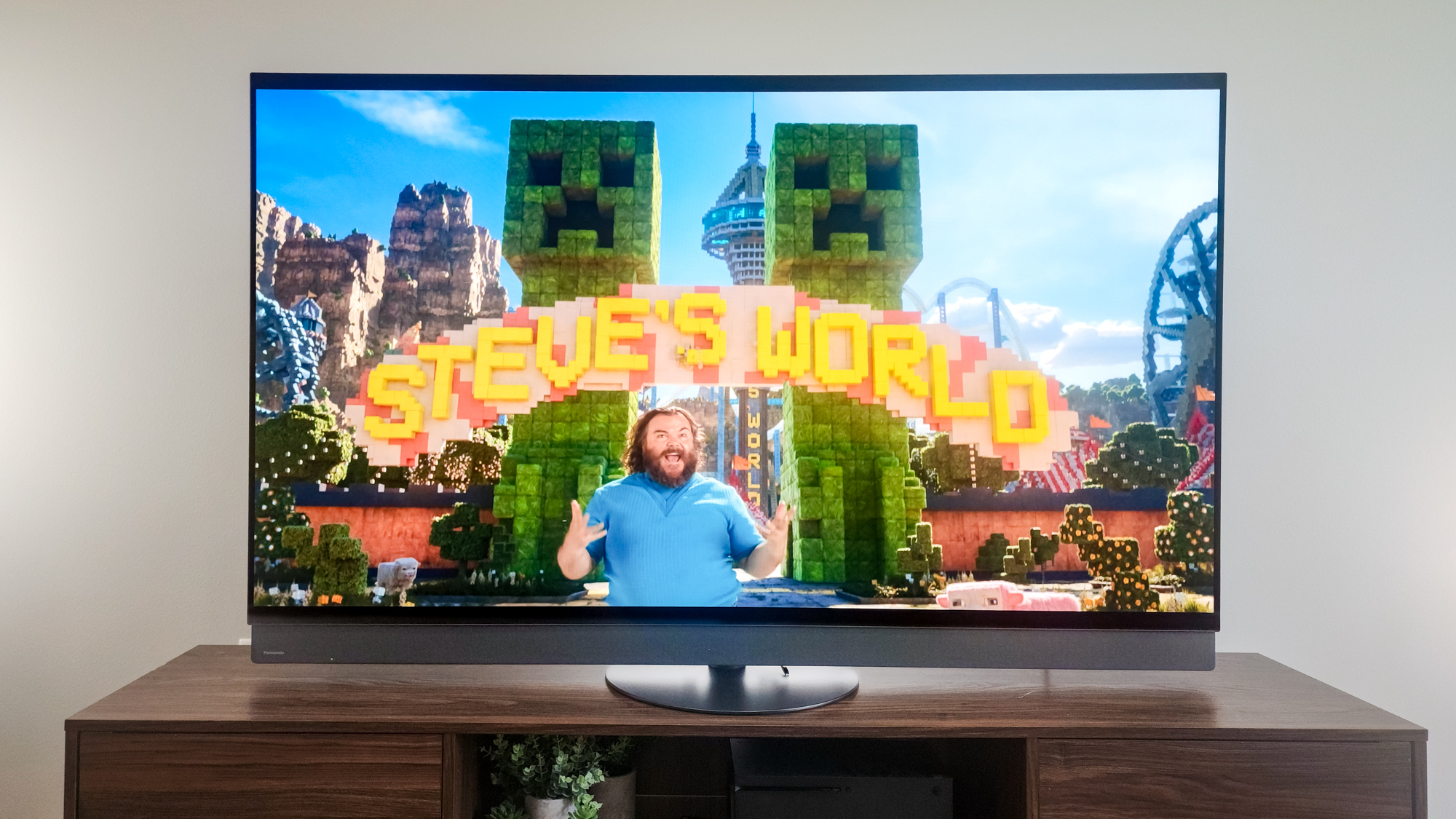
| Row 0 - Cell 0 | Panasonic Z95B | LG G5 | Panasonic Z95A | Samsung S90F | Sony Bravia 8 II |
SDR Brightness (10%, in nits) | 103 | 465 | 114 | 255 | 103 |
Delta-E (lower is better) | 1.36 | 1.99 | 2.33 | 1.12 | 3.59 |
Rec. 709 Gamut Coverage | 96.80% | 99.69% | 99.23% | 99.99% | 99.99% |
HDR Brightness (10%, in nits) | 983/2,263* | 2,296 | 1,625 | 1,231 | 1,584 |
UHDA-P3 Gamut Coverage | 99.77% | 99.79% | 98.34% | 100.00% | 100.00% |
Rec. 2020 Gamut Coverage | 81.42% | 82.42% | 74.44% | 89.03% | 90.55% |
Input Lag (ms) | 12.7 | 12.9/9.2 (Boost) | 12.6 | 9.1 | 16.3 |
* As tested with changed brightness limitation setting. See review for more information.
The picture looked gloriously crisp in Filmmaker Mode (usually the most accurate, as it’s designed to replicate Hollywood creators’ intent) no matter what I watched, and colors popped quite a bit in movies where that’s particularly important, whether in animation-heavy titles such as “A Minecraft Movie” and “Spider-Man: Across the Spider-Verse” or live-action fare like “Barbie” and “Wicked.”
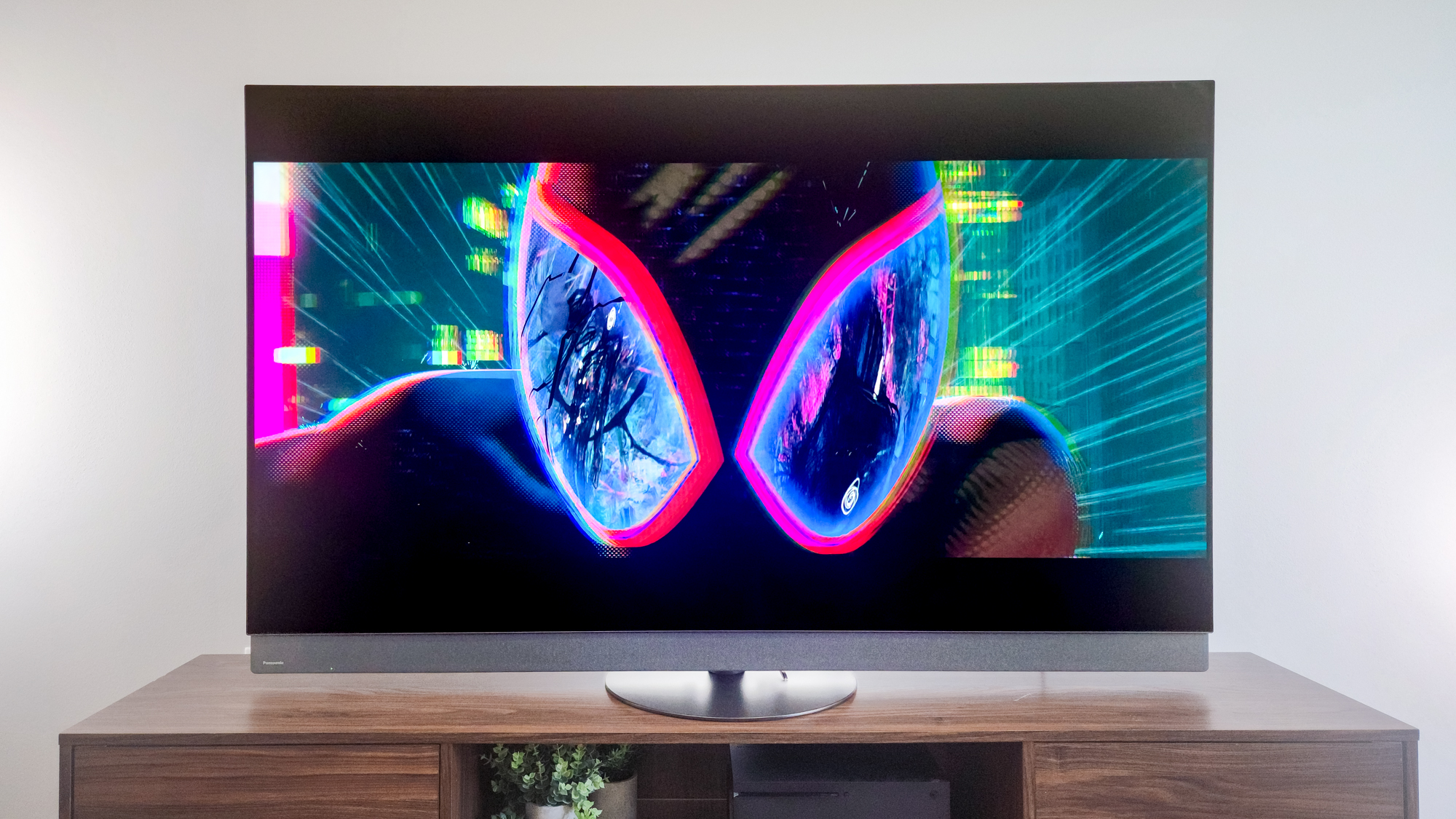
“Deadpool & Wolverine” and “Dune: Part Two” played well, too, with the action scenes exciting, and the latter also benefitting from the OLED screen by delivering an appealing grittiness that precisely characterized the barren wastes of Arakis. Ryan Coogler’s hit vampire film “Sinners” looked appropriately harsh and moody, too, if occasionally a bit dark.
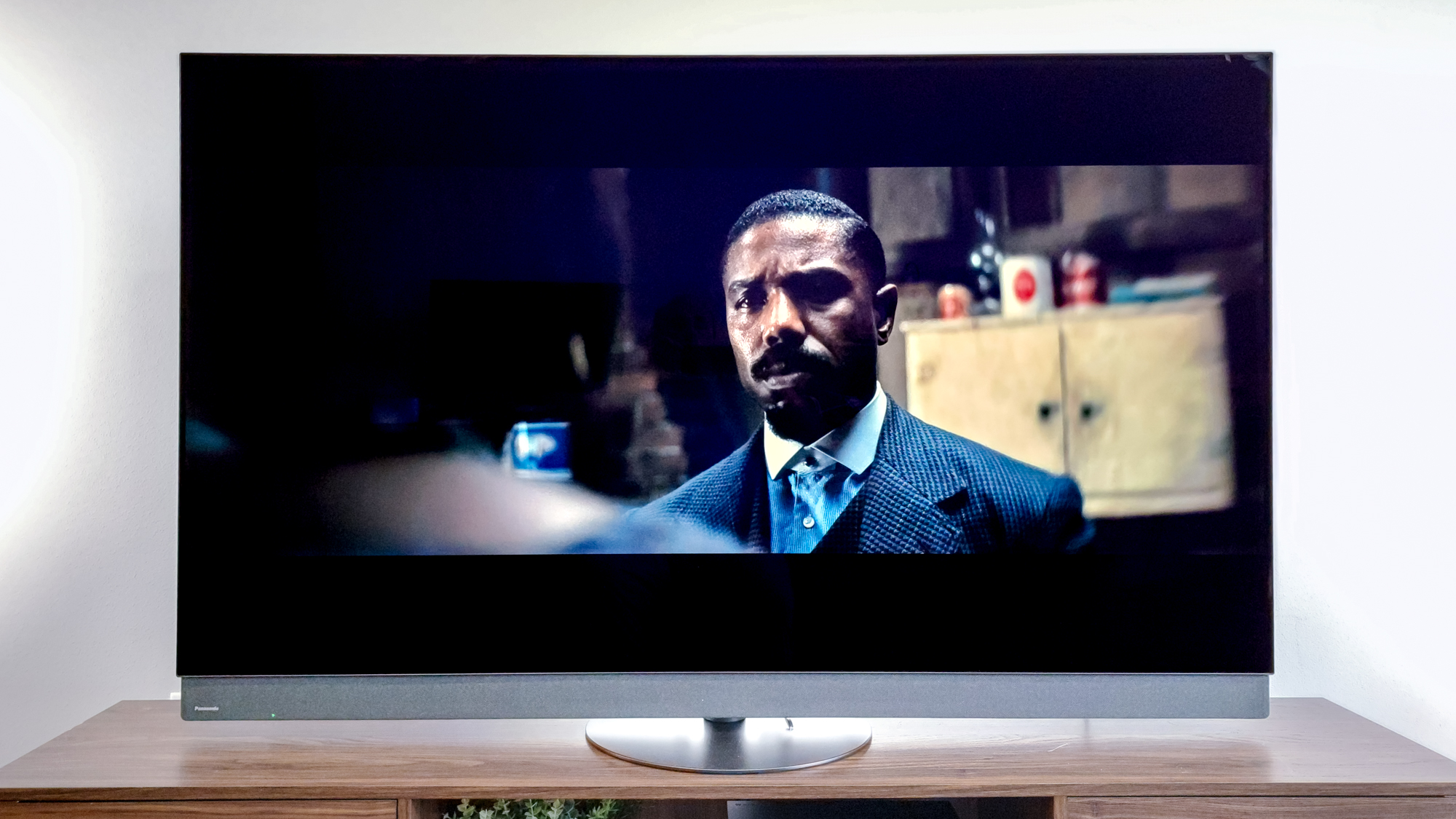
Other things I watched, such as YouTube videos, also seemed to be dimmer than I expected. Changing to other picture modes (primarily Normal, this set’s version of Standard, and Dynamic) did help correct this, but not as much as I expected.
The Z95B covered considerably more of the Rec. 2020 color gamut than the Z95A (81.42% versus 74.44%), which is also more than the LG C5 OLED.
What caused this issue? Two things. First, like many higher-end TVs (such as the Sony Bravia 8 II), the Z95B has its best picture modes (Filmmaker, Cinema, and True Cinema) tuned quite dim. But unlike those sets and, for that matter, the Z95A and almost everything else, the Z95B has been designed so its modes limit brightness to 1,000 nits unless the source is specifically mastered higher.
When I asked my Panasonic contact about this, he explained that this change was implemented “to improve the overall gradation and accuracy for [video content]…below 1,000 nits.”
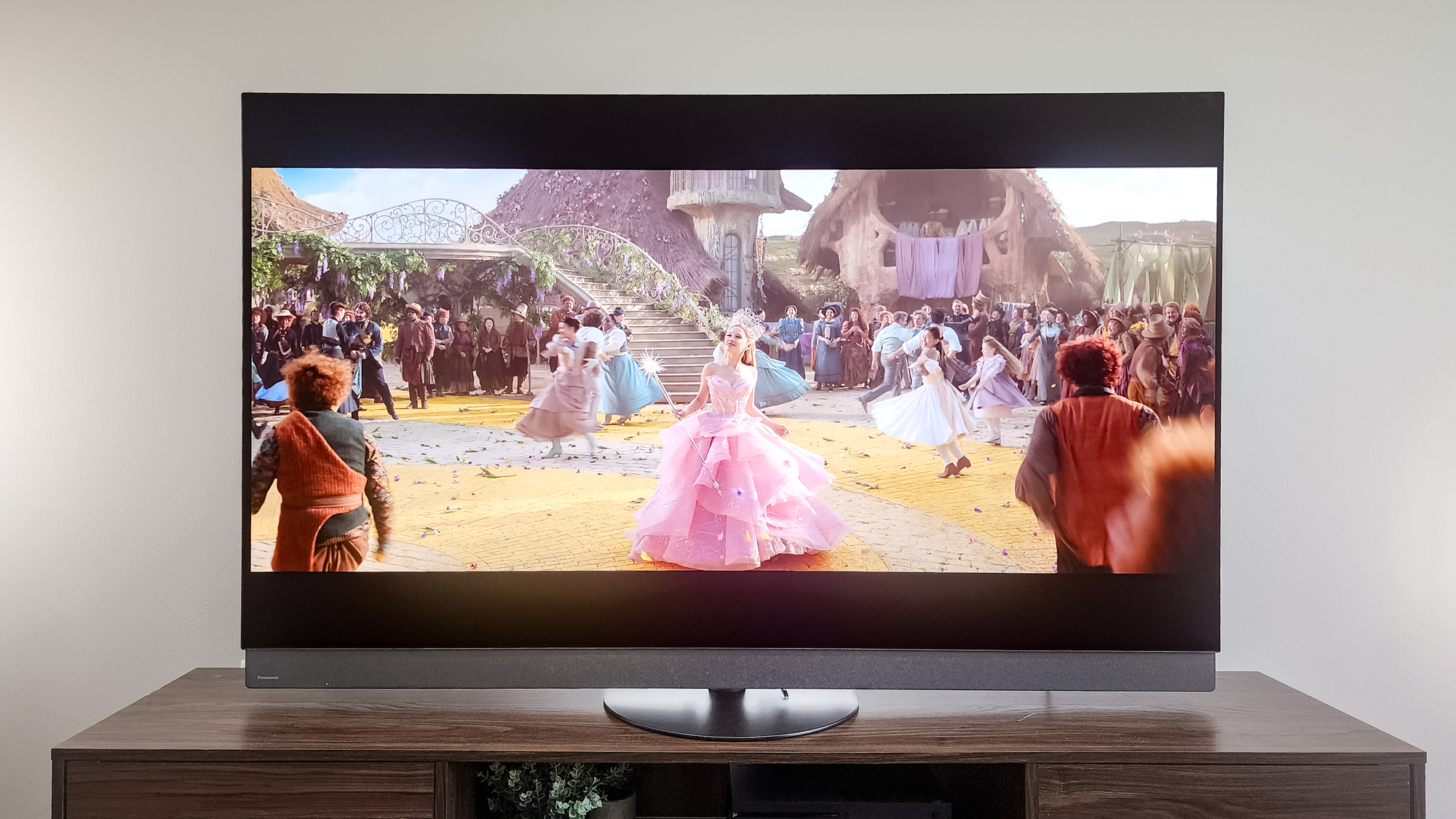
This tracks with the brightness results I saw: 103 nits with SDR content and 983 nits with HDR, all at Filmmaker Mode’s default settings. But when I used Calman to remove the 1,000-nit restriction, its brightness zoomed to a first-class 2,263 nits — only a tick behind the G5.
This is extraordinarily unusual — if not unique — to see in a major TV, and not something that will benefit everyone. If you don’t watch things mastered above 1,000 nits (and you very well might not even know), it’s all going to look quite a bit darker on the Z95B. You can increase the Luminance level in the picture settings to regain that brightness, or you can switch to Dynamic mode (which I do not endorse doing, but its brightness is opened all the way up), but just be aware that, if you don’t, you may not be seeing everything this TV can do.
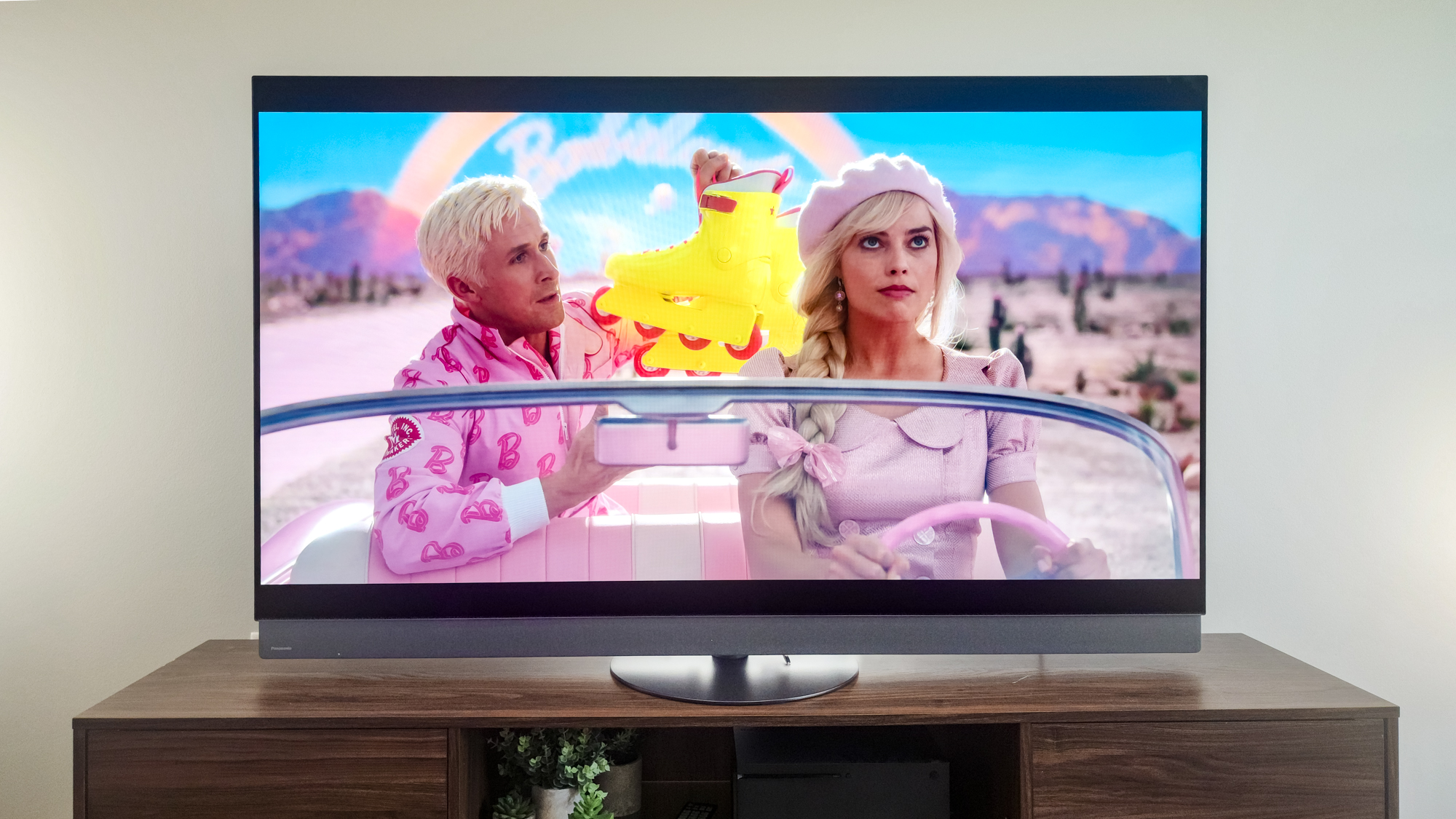
It can do a lot, too, especially with color. The Z95B’s measured Delta-E (the value that represents the difference in color between the image source and what appears on the screen, with lower numbers being better) is a deliriously good 1.36. That’s exceeded (and only very little) by a few of the higher-end sets out there, such as the LG C5 and the Samsung S90F and S95F. (The Z95A’s still-excellent 2.33 can’t compete.)
And the Z95B covered considerably more of the Rec. 2020 color gamut than the Z95A (81.42% versus 74.44%), which is also more than the LG C5 OLED, but not the G5 or the Samsung or Sony sets.
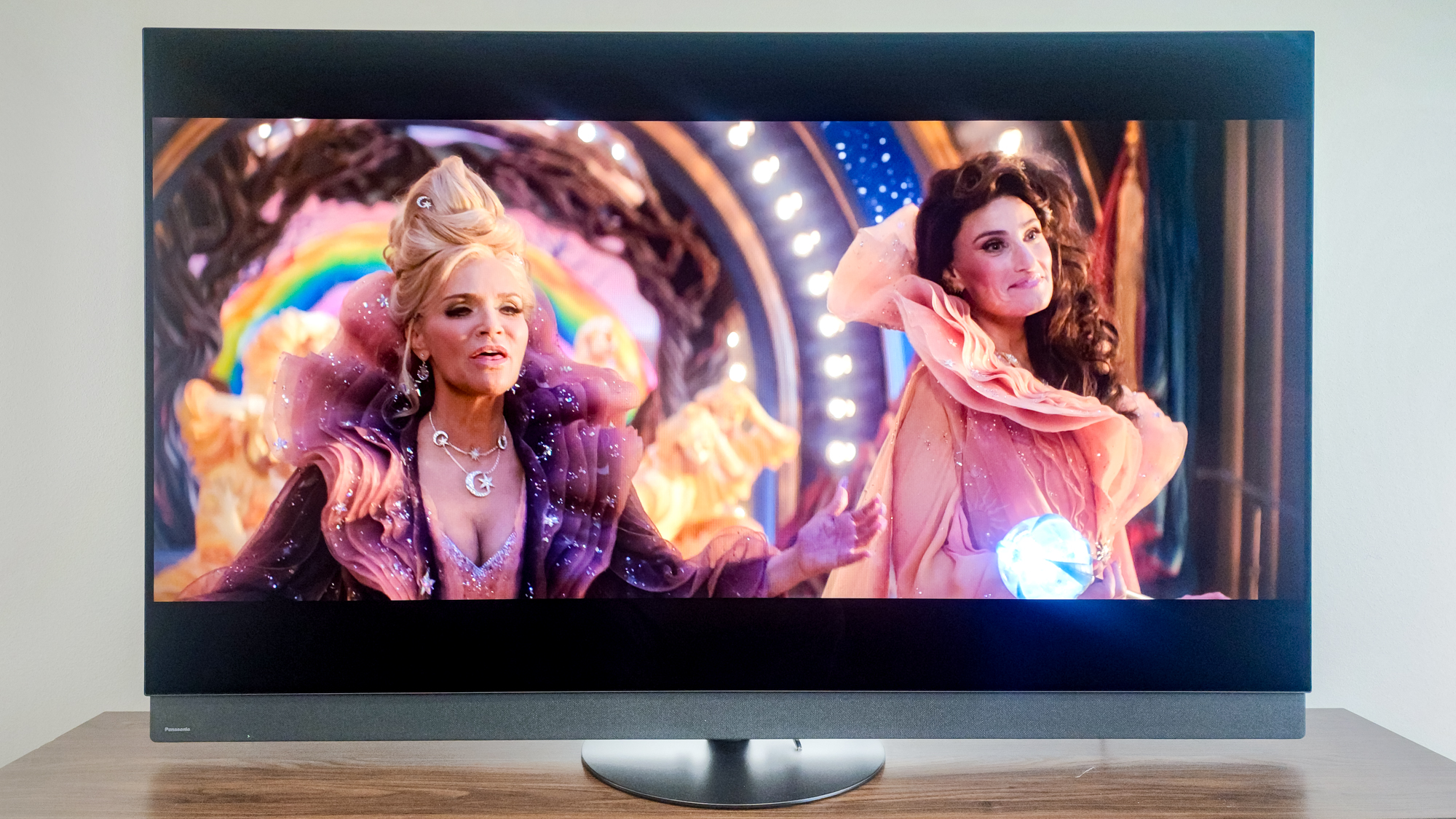
The Z95B covered just a tick more of the UHDA-P3 gamut than the Z95A (all of this generation’s sets are hitting upwards of 99% anyway), and we measured slightly less coverage of the Rec. 709 (SDR) gamut (96.8% versus 99.99%), but color performance offered next to nothing to complain about.
Further bolstering HDR performance on the Z95B is the fact that the set supports all four major formats (Dolby Vision, HDR10, HDR10+, and HLG). And like all OLED TVs, the Z95B delivers strong uniformity of color and picture quality from any viewing angle, though the rotating stand largely ameliorates that problem anyway.
Panasonic Z95B OLED review: Audio
Even the best TVs are rarely known for their superlative sound quality; the best I’ve heard have been the higher-end Sony TVs that turn the screen itself into the speaker, and even those could never be mistaken for a real home audio system. But the complex setup in the Z95B gives that solution a run for its money.
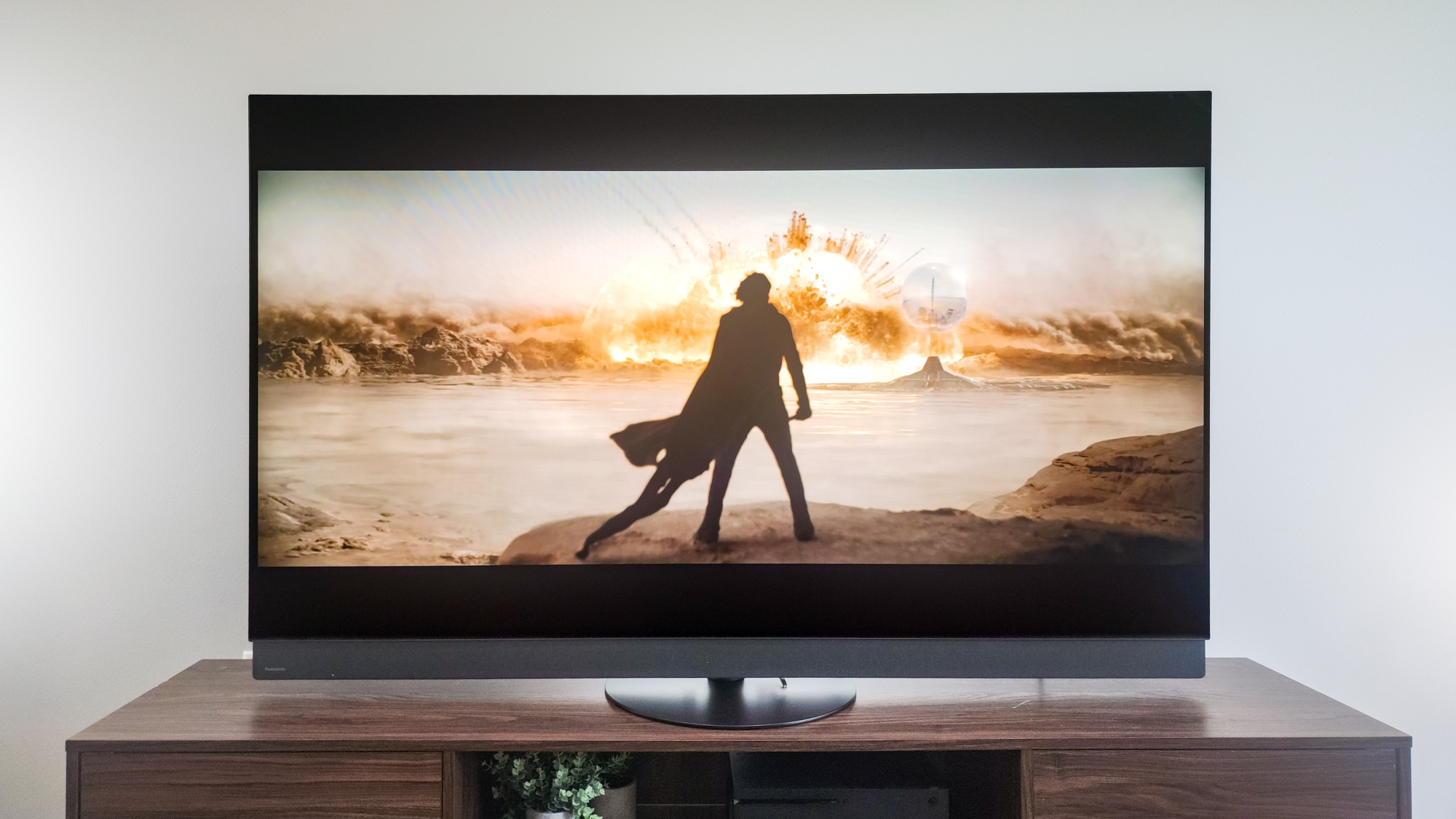
It combines a large number of speakers in multiple locations (the bottom of the TV, the dies, and upward-firing as opposed to the typical downward-firing) with a subwoofer, ultimately delivering audio that sounds impressively above average.
It doesn’t matter what you’re listening to, either: Traditional dialogue scenes, Gatling-gun-intense action-movie sound effects, pure music (neither the bass nor treble reminded me of attending a live concert, but the sound for both was fairly accurate, appropriately rich, and crystal clear), or a combination of the above all are a delight. True audiophiles will probably still want to pick up one of the best soundbars on the market, but if that’s not you, you won’t feel like you’re missing much.

To its credit, Panasonic has also implemented some of the best sound positioning I have ever heard from a TV with the use of its 360° Soundscape Pro technology. By activating Sound Focus option in the TV’s menus, you can implement any of four configurations for your specific space, audience, and content, and aim the sound anywhere in the room you want it. There’s four main modes here: Pinpoint (all of the sound at one place), Area (all of the sound everywhere), Spot (some sound everywhere, all of the sound somewhere), and Ambient. You make these adjustments with the volume on, so you can hear the sound move as you alter the positioning, making it even easier to get it exactly right.
It’s a fun, fascinating feature that works exactly as advertised, though I must admit, I tended to keep it off — the Z95B’s audio doesn’t need a whole lot of help. Every other TV maker: Take notes.
Panasonic Z95B OLED review: Gaming
Using my Leo Bodnar 4K Input Lag Tester, I measured the Z95B’s input lag at 12.7ms. That’s below the 16ms threshold of a single frame, and thus more than sufficient for most gamers’ needs, though LG’s and Samsung’s sets do get in the low-9ms range, giving them an ever-so-slight edge.
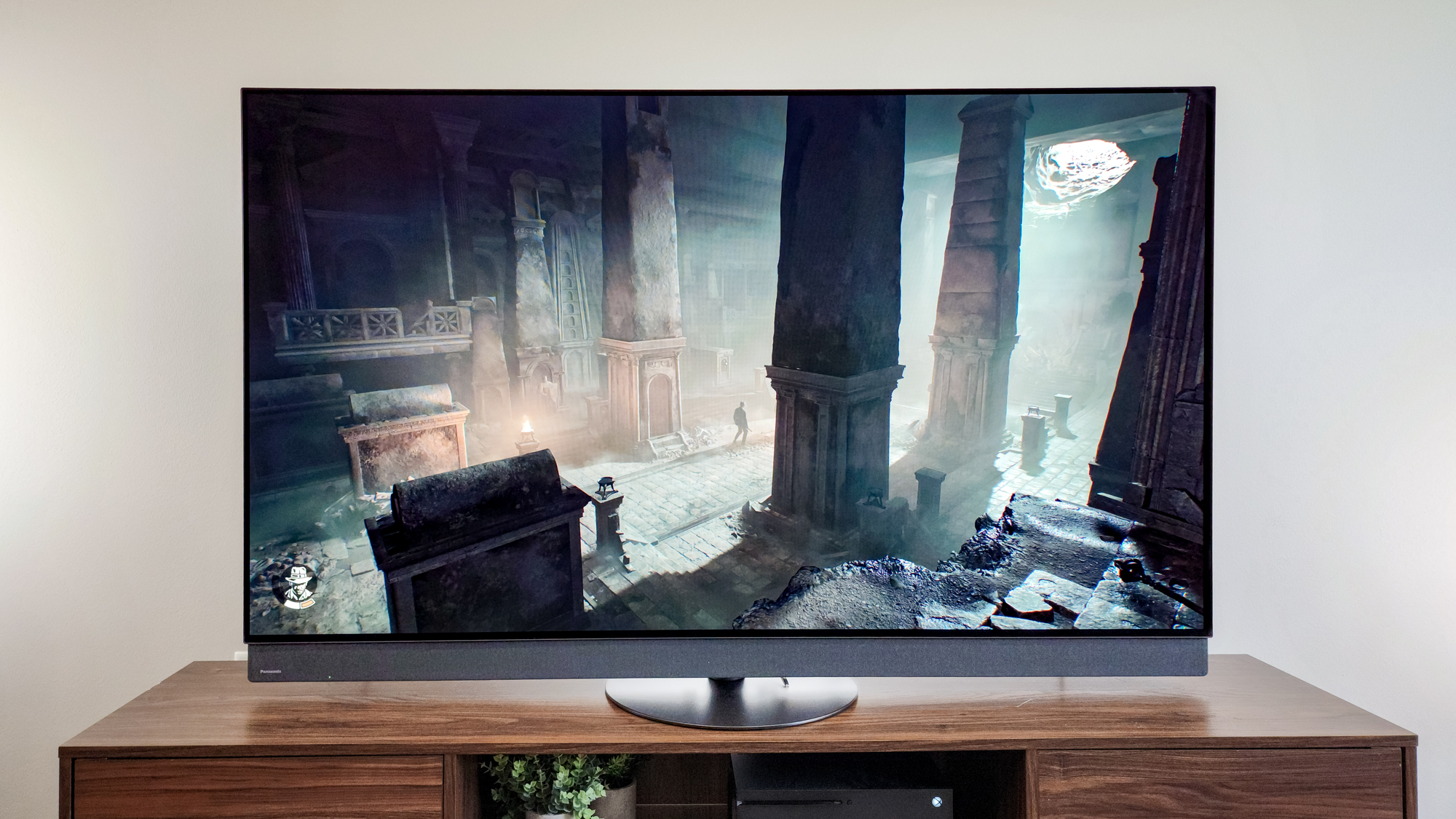
In playing through Indiana Jones and the Great Circle, I noticed no lack of responsiveness and the animation was smooth whether in stealth or full-out fistfight moments. If you want to hook up a PC with a discrete graphics card, you will also be thrilled with support for Nvidia G-Sync and AMD FreeSync Premium.
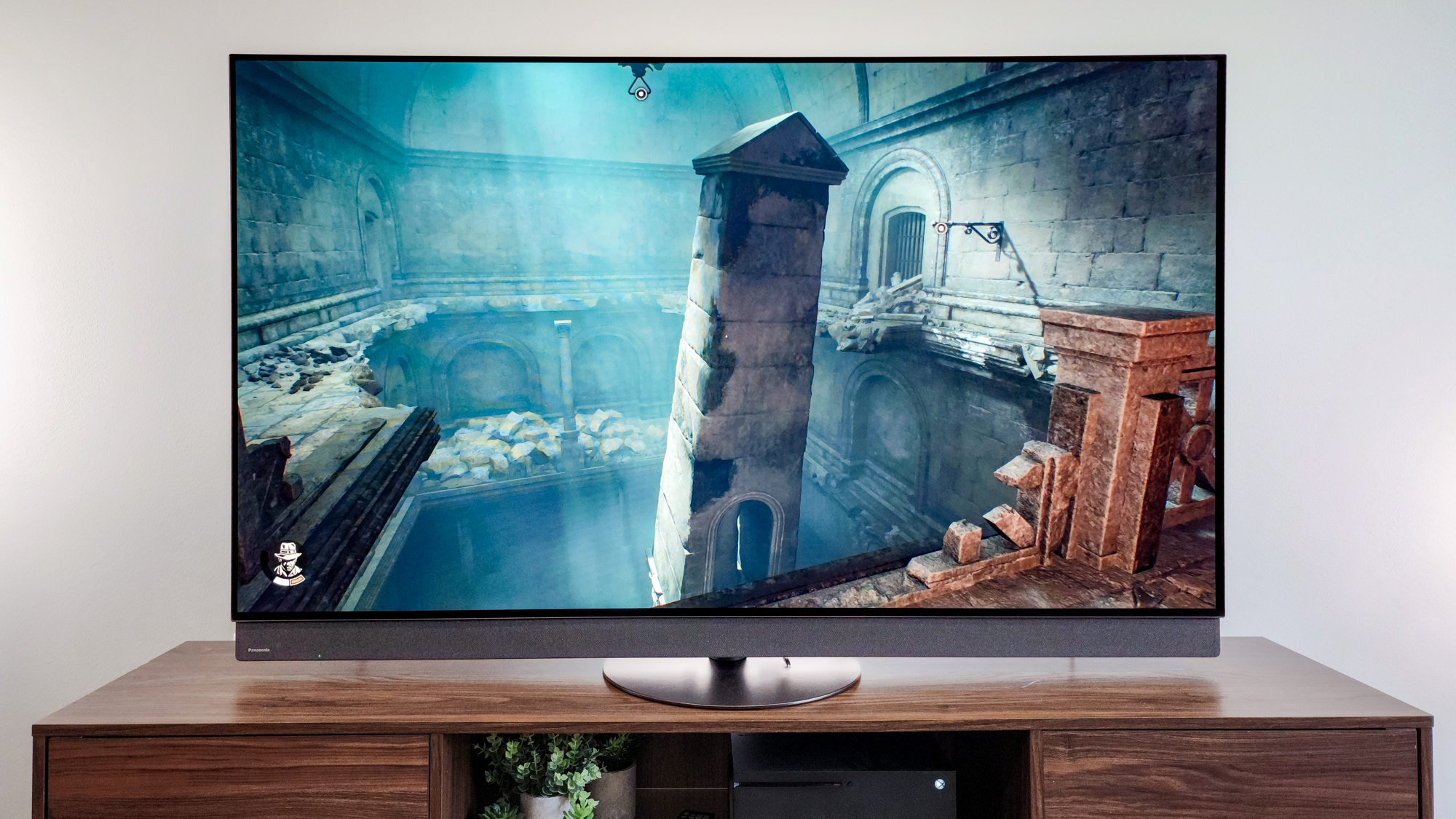
Though the Game Control Board (Panasonic’s name for the pop-up in-game menu) offers access to all the same settings and information as the menus from other manufacturers (including the picture and sound modes, ALLM and VRR status, and more), it is a bit more distracting. It dims at least a third of the screen and fills it with round, colorful icons that took me out of the game just enough.

A somewhat more subdued, cohesive design would be an improvement.
Panasonic Z95B OLED review: Smart features
It’s rare these days to find many TVs not manufactured by Amazon that use that company’s smart interface, but the Z95B does. This strikes me as one of its biggest missteps. Though it resembles other interfaces, it has some notable limitations.
The home screen surfaces Amazon Prime content heavily (perhaps exclusively) in its top carousel. Aside from the “Continue watching” bar, there are not many clear, useful elements situated in the upper part of the screen. And although it’s easy to change your Amazon profile or add a new one, browse your Prime Video purchases, or search the service’s catalog, doing anything else always takes a few more clicks than it feels like it should.
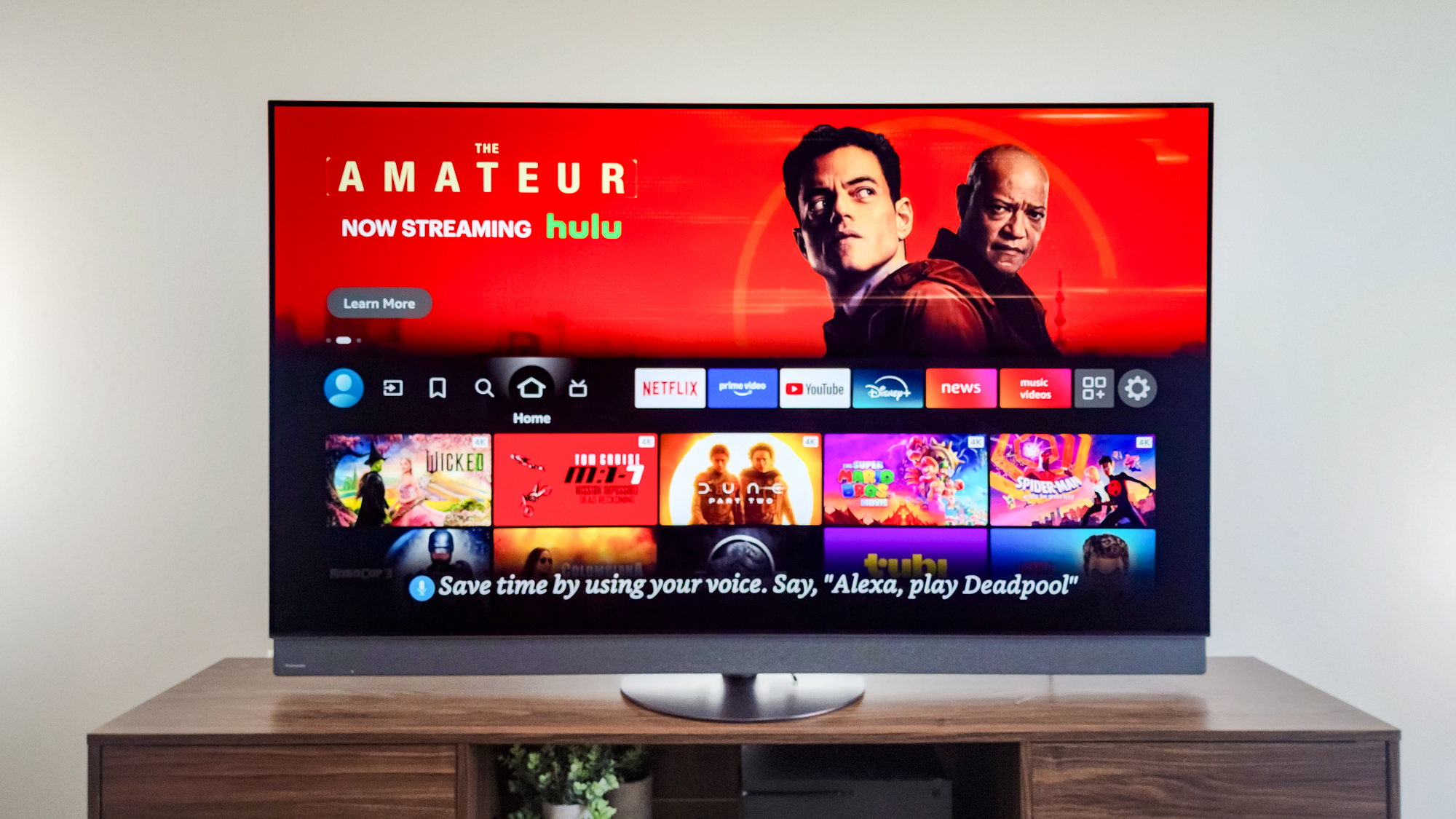
Adding the HBO Max and Paramount+ apps to the app bar proved a shockingly byzantine procedure, making installing the app and placing it on the bar two entirely separate actions — something rare these days. It’s an unfriendly approach I could do without.
And even though the TV is clearly tied in to my Amazon account and should know my viewing preferences, its suggestions were curiously off-point. I’m a bit old for “Peppa Pig” and “Paw Patrol,” for example, and I’m not sure what I’ve watched to give the system the impression I would want to watch either ”One Night in Idaho: The College Murders” or “Heads of State.” (That both are Prime Video exclusives is, I’m sure, entirely coincidental.) This made me miss the broader-ranging power of Google TV or the lean-and-mean ease of LG’s webOS.
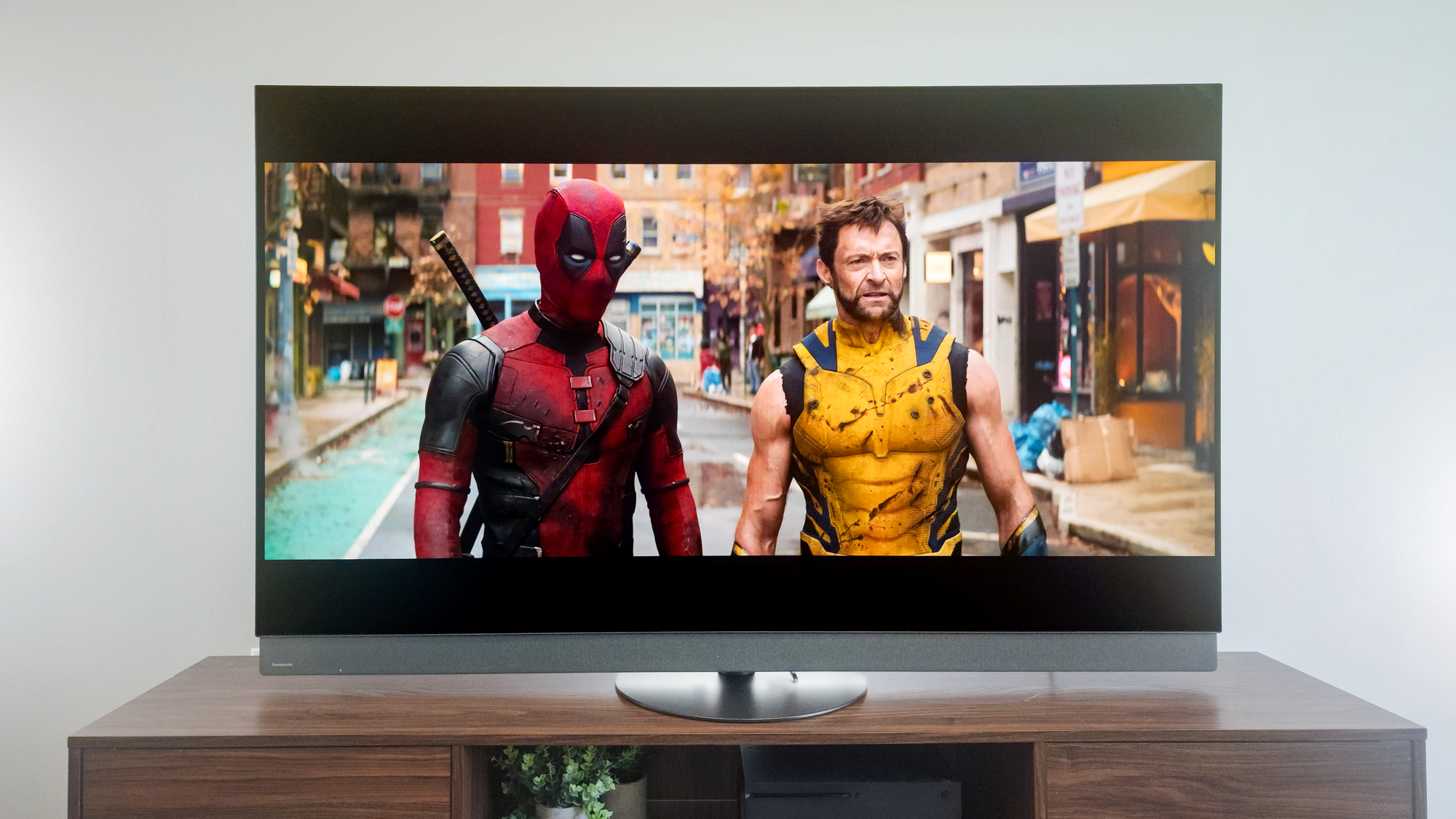
At least the remote’s voice search function worked well and quickly, presenting my results with a minimum of fuss. Apple AirPlay is supported for streaming from mobile devices and, increasingly unusually for TVs these days, there is an ATSC 3.0 tuner for watching the widest variety of over-the-air broadcasts (including in 4K). And the Z95B can use Alexa to tie in to your pre-existing smart home ecosystem.
Panasonic Z95B OLED review: Remote
The Z95B’s remote reflects the current industry trend toward smaller, simpler designs, in line with what we’ve seen from LG, Samsung, and Sony. It’s less of a flat-candy-bar shape, though, with a rounded underside that makes it somewhat more ergonomic.
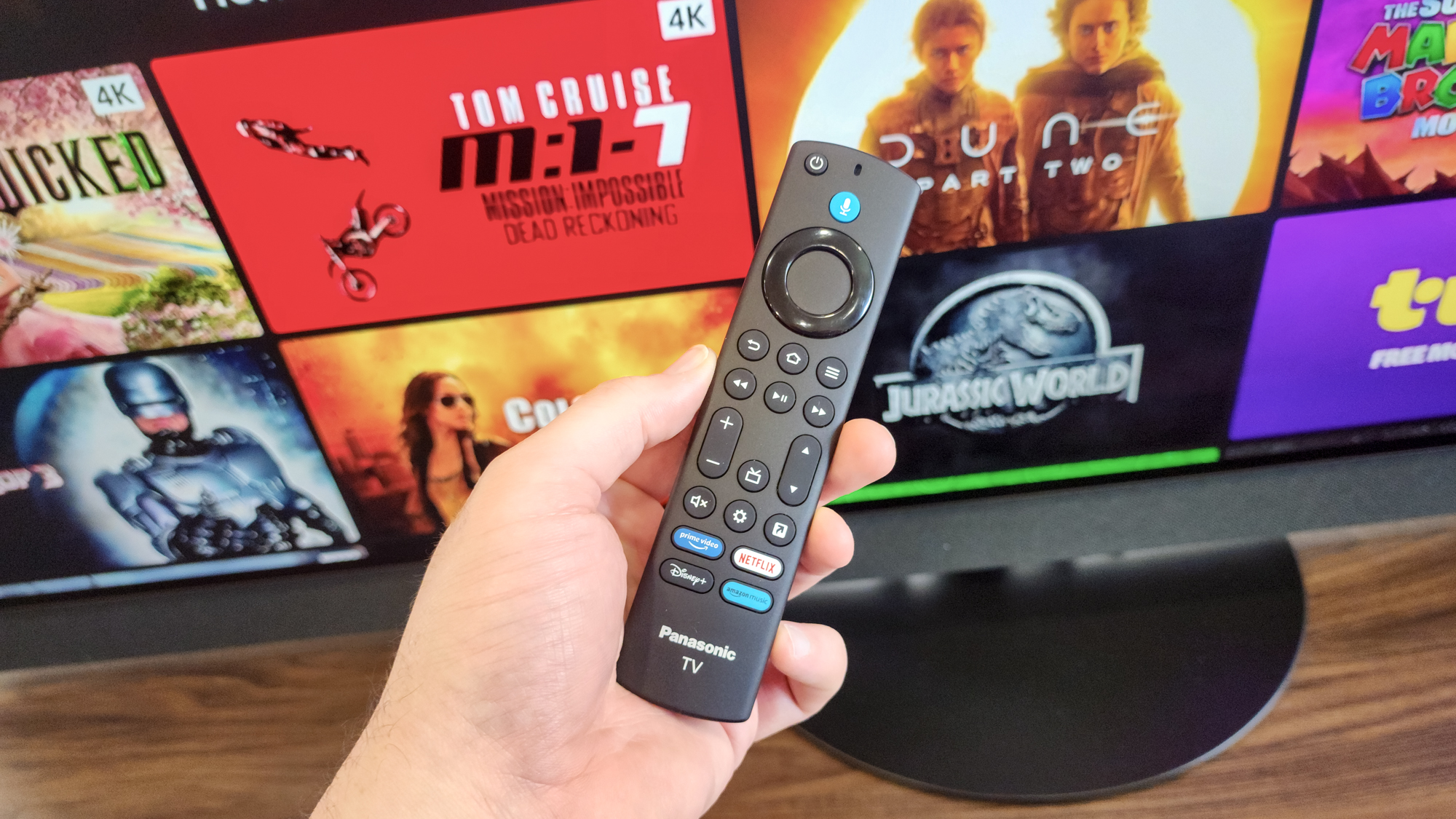
There is a microphone button at the top, followed by a control wheel, and then a restrained selection of other keys designed for pain-free navigation on on-screen menus. There are only four dedicated shortcut keys: Amazon Prime Video (of course), Amazon Music, Netflix, and Disney+.
My only real issue with the remote is that it’s a bit slow interacting with the TV. I experienced lag constantly when changing the volume or pausing a YouTube video, and though it wasn’t bad enough to disturb my viewing, it was more noticeable than I’m used to.
Panasonic Z95B OLED review: Verdict
The Z95B proves that Panasonic can play in the top tier of luxury OLED TVs and not miss a beat. With performance and features that, in most cases, match what you get from the best sets on the market, and a few flourishes you won’t find anywhere else (its design, its ear-pleasing audio system), it gets just about everything right.
The only real things it gets wrong are that brightness issue and its strange choice in smart platforms. Intentionally limiting a set’s capabilities, particularly when it’s one of the brightest you can buy, is a gutsy move, to be sure. But it’s one that won’t appeal to everyone and that may have an immediate, negative impact on certain types of video unless you crank up the brightness or change modes. And you could correctly niggle about there only being two HDMI 2.1 ports or the clunky Amazon Fire OS.
On any pricy, high-end TV, those details do matter, and they matter just enough to keep the Panasonic Z95B from being the new king of OLEDs. But they can’t stop it from being an outstanding set and one that — minor frustrations aside — earns its hefty asking price.
Matthew Murray is the head of testing for Future, coordinating and conducting product testing at Tom’s Guide and other Future publications. He has previously covered technology and performance arts for multiple publications, edited numerous books, and worked as a theatre critic for more than 16 years.
You must confirm your public display name before commenting
Please logout and then login again, you will then be prompted to enter your display name.
